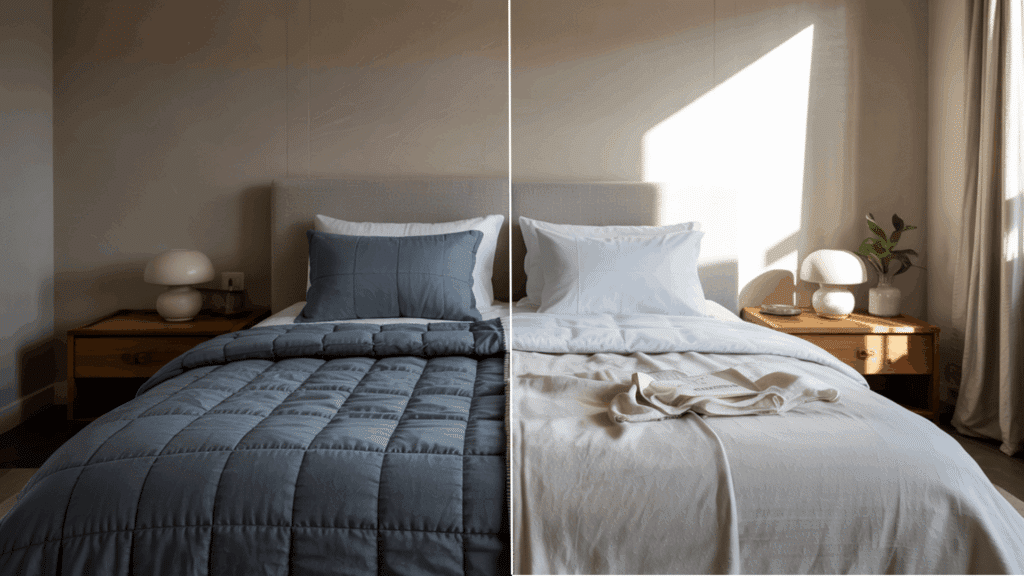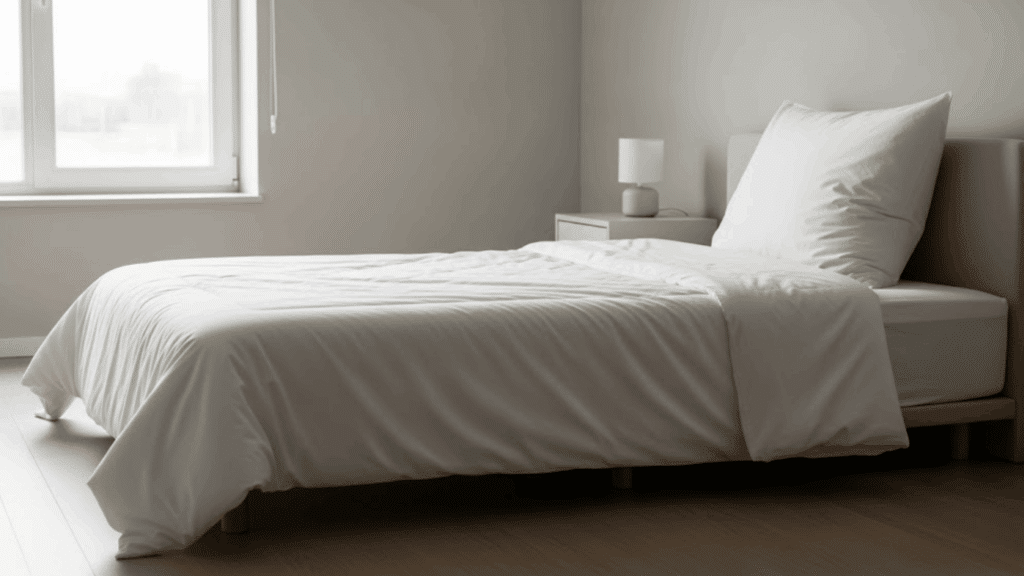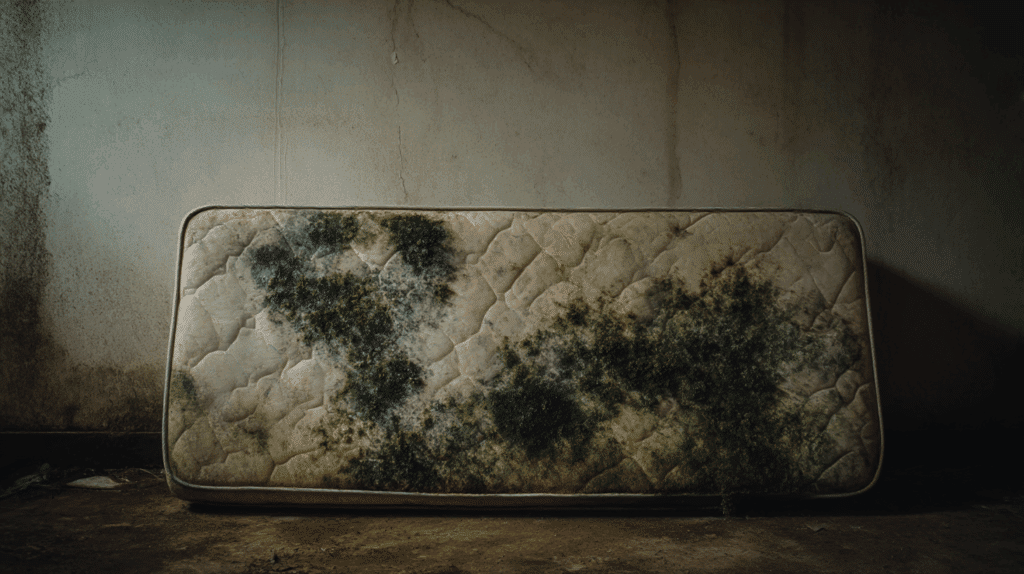If you’ve ever stood in the bedding aisle wondering whether to grab a comforter or a blanket, you’re not alone.
They both keep you warm, but they do it in very different ways. A comforter is thick, puffy, and built for warmth with multiple layers and cozy fill.
A blanket, on the other hand, is all about simplicity; a single layer of fabric that offers comfort.
If you’re a cold sleeper, a hot sleeper, or somewhere in between, choosing the right bedding can make or break your night’s rest.
In this, we’ll break down the key differences, when to use each one, how to layer them, and which works best for your space, lifestyle, and sleep needs. Let’s settle the comforter vs. blanket debate once and for all!
What is a Comforter?

A comforter is thick bedding made with three layers that work together to provide warmth and comfort. It has fabric on top and bottom, with filling material sandwiched in the middle.
The filling can be down feathers, cotton, synthetic materials, or wool. Comforters look puffy and thick because of this construction.
They usually have patterns sewn into them called quilting, which keeps the filling spread out evenly across the entire surface.
Most comforters come as part of a bedding set with matching pillowcases and sheets. The outer fabric is typically cotton, polyester, or microfiber, chosen for softness and durability.
Comforters are designed to be the main covering on your bed, providing consistent warmth throughout the night without needing additional layers.
What is a Blanket?
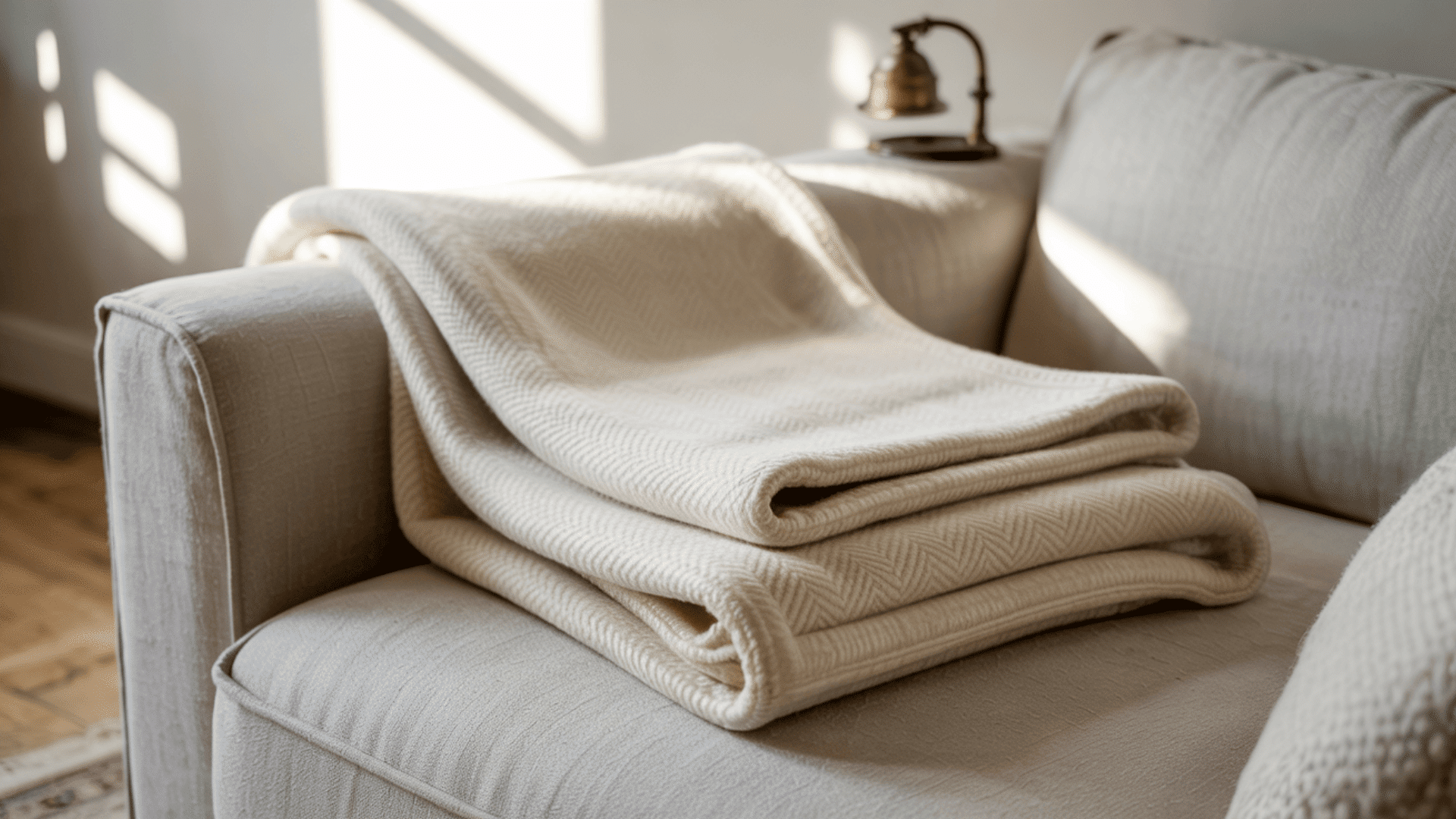
A blanket is made from one layer of fabric that provides warmth through the material itself rather than trapped air or filling.
It can be thin or thick, depending on the material and weaving technique used. Blankets are flat and easy to fold, making them simple to handle and store.
You can use blankets in many ways beyond the bedroom – they work well on couches, for outdoor activities, or while traveling. Many people like to layer multiple blankets to achieve their preferred warmth level.
Common materials include cotton for breathability, wool for natural temperature control, fleece for softness, and synthetic options like microfiber for easy care.
Blankets come in various weights and thicknesses, from light summer throws to heavy winter covers, giving you flexibility to choose based on season and personal comfort needs.
Comforter vs Blanket Materials
The material you choose plays a big role in how your bedding feels, breathes, and lasts. Let’s compare comforter and blanket materials to help you find the right fit.
| FEATURE | COMFORTER | BLANKET |
|---|---|---|
| Breathability | Varies by fill; down and cotton offer better airflow than polyester | Cotton and bamboo blankets are highly breathable; fleece is less so |
| Warmth | Very warm due to insulating fill; ideal for cold climates | Depends on the fabric; wool and fleece offer high warmth, and cotton is cooler |
| Durability | Durable if well-constructed; down may flatten over time | Generally, more durable, simpler weaves last longer with regular washing |
If you prefer the cozy loft of a down comforter or the breathable ease of a cotton blanket, the right material can turn your sleep comfort year-round.
Comforter vs Blanket: Construction, Warmth, Care & Cost
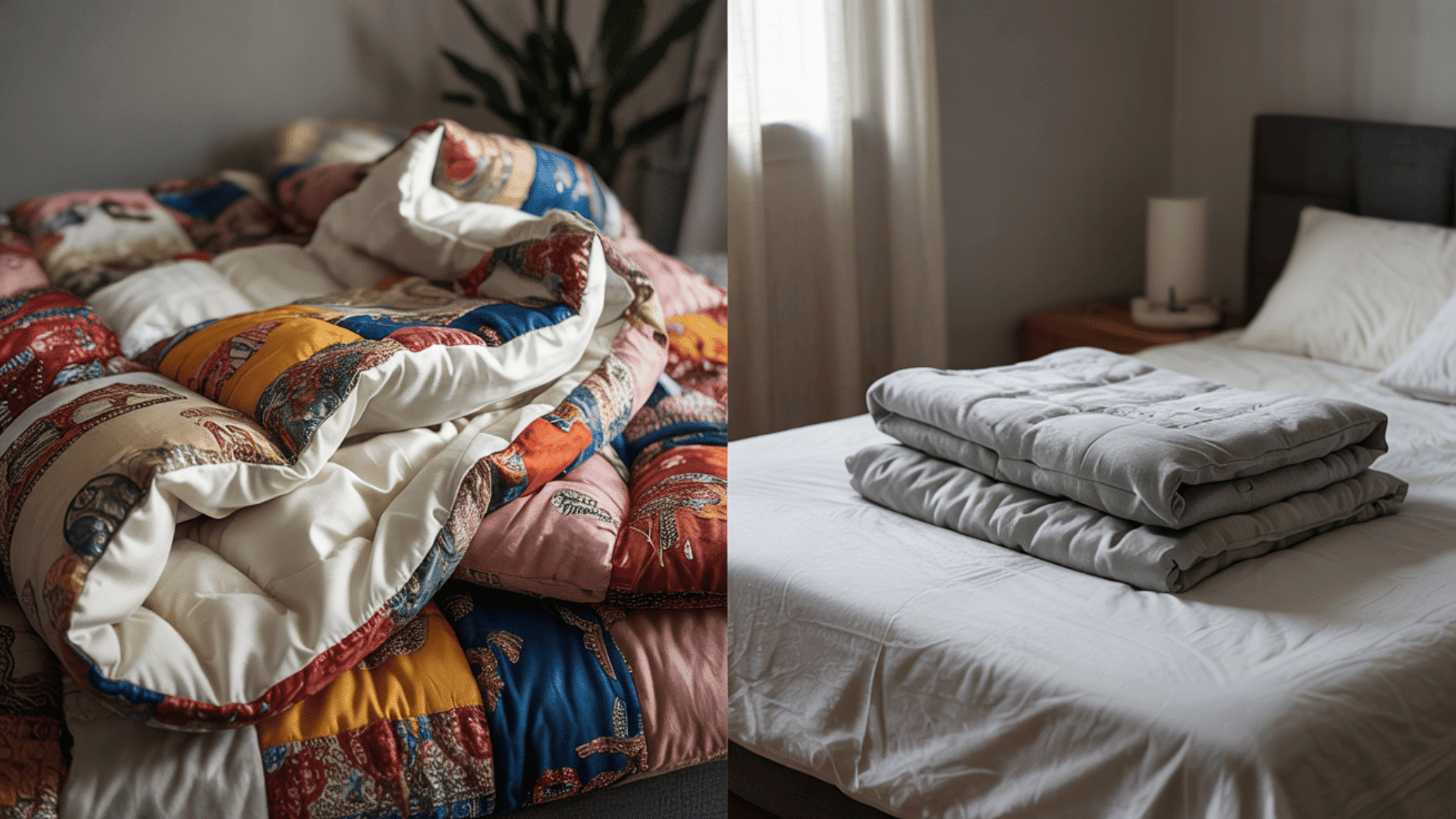
Understanding the main differences between these bedding options will help you make the right choice for your sleep needs. Here are the key factors that set comforters and blankets apart.
1. Construction: Multi-Layer Comforter vs Single-Layer Blanket
Comforters have multiple layers with filling inside. This makes them thick and fluffy. The filling gets held in place by stitching patterns.
Blankets use just one layer of fabric. This makes them flatter and easier to handle. They don’t have any filling material inside.
2. Warmth Level: Which Keeps You Warmer: Comforter or Blanket?
Comforters provide more warmth because of their filling. The trapped air inside acts like insulation. This makes them great for cold nights and winter weather.
Blankets offer different warmth levels based on their material. Wool blankets can be very warm, while cotton ones are cooler. You can layer blankets to adjust warmth as needed.
3. Weight: Comforter vs Blanket Feel and Thickness
Most comforters feel heavier because of their filling. However, down-filled comforters can be surprisingly light while still being very warm.
Blankets vary in weight depending on their material and thickness. Generally, they feel lighter than comforters of a similar size.
4. Care and Cleaning: Which Bedding Is Easier to Wash?
Comforters need special care when washing. Some require dry cleaning, while others need large washing machines. They take longer to dry because of their thickness.
Blankets are usually easier to wash at home. Most can go in regular washing machines and dry quickly. This makes them more convenient for frequent cleaning.
5. Storage Space: Which Is Easier to Store?
Comforters take up more space when storing. They’re bulky and hard to fold small. You might need special bags to store them during warm months.
Blankets fold flat and store easily. They fit in small spaces like closet shelves or under-bed storage boxes.
6. Price Comparison: Blanket vs Comforter Costs
Comforters typically cost more than blankets. Prices range from $50 to several hundred dollars. Down-filled options are usually the most expensive.
Blankets have a wider price range. You can find basic ones for $15 or spend $200+ on premium materials. This makes them budget-friendly options.
How to Layer Blankets and Comforters for Perfect Sleep
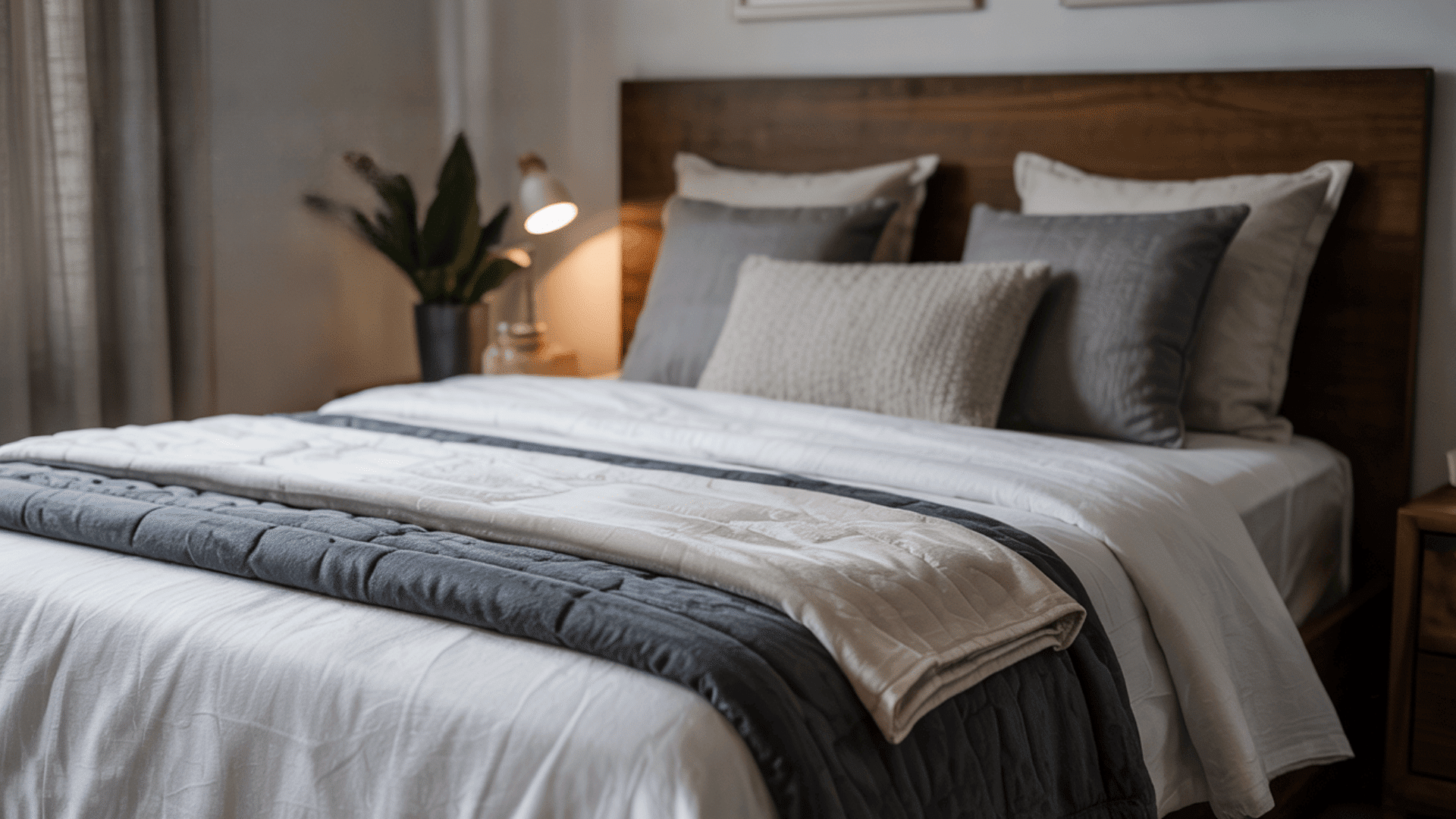
You don’t have to choose just one option when it comes to staying comfortable at night. Many people combine comforters and blankets to create the perfect sleep setup.
Start with a light comforter as your base layer for consistent warmth throughout the night. Add a blanket at the foot of the bed for extra coverage when temperatures drop.
During seasonal changes, use lightweight blankets in the summer months and add your comforter back when winter arrives. This layering approach gives you complete control over your temperature and comfort level.
You can easily remove or add layers as your body temperature changes during sleep, ensuring you stay comfortable all night long without getting too hot or too cold.
Which Works Better for You?
Choosing between a comforter and a blanket isn’t just about looks or habit; it’s about how you sleep, what your space allows, and how much effort you want to put into care and layering.
The right option should match your lifestyle, not work against it.
When to Use a Comforter: Best Cases and Benefits
Certain sleep preferences and living situations make comforters the better choice. Consider these factors to determine if a comforter suits your needs.
| SITUATION | WHY COMFORTER WORKS BETTER |
|---|---|
| Cold sleepers | Provides consistent insulation all night long |
| Cold climates | Superior warmth for harsh winter conditions |
| Simple bedding preference | One-piece solution without layering needed |
| Large beds (Queen/King) | Proper coverage and proportional appearance |
| Guest bedrooms | Easy setup for visitors without multiple pieces |
| Consistent temperature needs | Maintains steady warmth without adjustment |
| Less frequent washing | Requires cleaning only every few months |
A comforter might be your perfect bedding solution if you value warmth and convenience. Choose quality materials that match your budget and climate needs for the best long-term satisfaction.
When to Use a Blanket: Why It’s Better for Some Sleepers
Blankets offer flexibility and convenience that work well for many different sleep situations. These scenarios make blankets the smarter bedding choice over comforters.
| SITUATION | WHY BLANKETS WORK BETTER |
|---|---|
| Hot sleepers | Easy temperature control by adding or removing layers |
| Warm climates | Lighter coverage that won’t cause overheating |
| Temperature fluctuations | Can adjust warmth throughout the night as needed |
| Small living spaces | Compact storage without taking up much room |
| Easy care preference | Simple machine washing and quick drying |
| Budget-conscious buyers | Lower cost with options for different seasons |
| Multi-purpose use | Works for couch, outdoor activities, and more |
Blankets provide the adaptability that many people need for comfortable sleep. Choose different weights and materials to create a flexible bedding system that works year-round.
Bedding Tips for Different Needs

Your personal circumstances and health factors can influence which bedding option works best for you. These special situations require extra thought when choosing between comforters and blankets.
For Couples
When two people share a bed, they often prefer different levels of warmth. One might feel cold while the other feels hot. Here are a few ways to fix that:
- Use two separate blankets instead of one large comforter
- Try a lightweight comforter with extra blankets on just one side
- Choose materials that balance warmth and breathability, like cotton or bamboo blends
For Kids
Children need bedding that is simple, safe, and fun. Look for:
- Easy-to-wash fabrics for accidents or spills
- Bright patterns or favorite characters to make bedtime fun
- Lightweight materials that won’t feel too heavy
- Safe stitching and fillings, with no loose parts or choking risks
For Health Concerns
Some people need special bedding to stay comfortable:
- Allergies – Use cotton blankets or comforters with synthetic fill instead of down
- Joint pain – Avoid heavy layers that press on sore spots; soft down or thin blankets are better
- Temperature issues – Use layers that can be added or removed quickly to keep body heat in balance
Final Thoughts: Which One’s Right for You?
Both comforters and blankets have their place depending on your sleep style, climate, and convenience needs.
Comforters offer all-in-one warmth with a plush feel, perfect for cold nights or streamlined bedding setups. Blankets, on the other hand, are smooth, easy to care for, and great for layering or warm climates.
You don’t have to choose just one; many people use both for year-round comfort.
When you want cozy warmth or flexible layers, the right bedding can make all the difference. Take your time to pick what feels best for you.
Got a preference or a go-to combo that works for you? Drop a comment below; we’d love to hear your thoughts!

